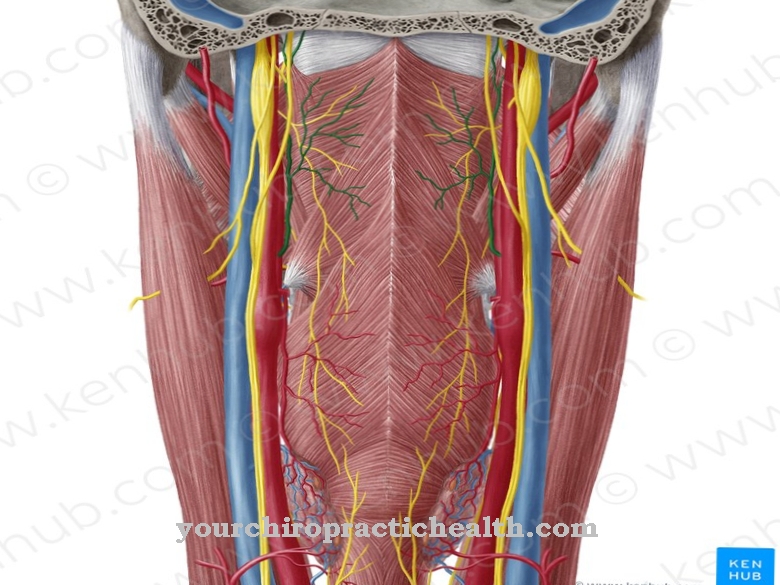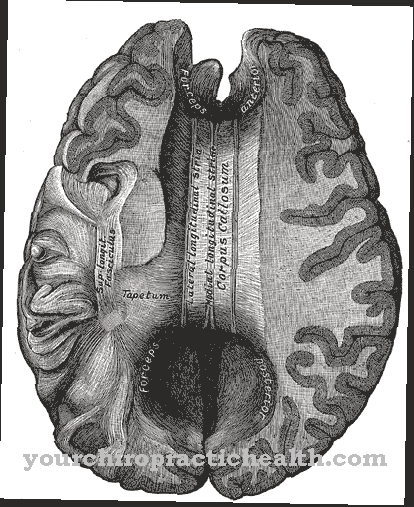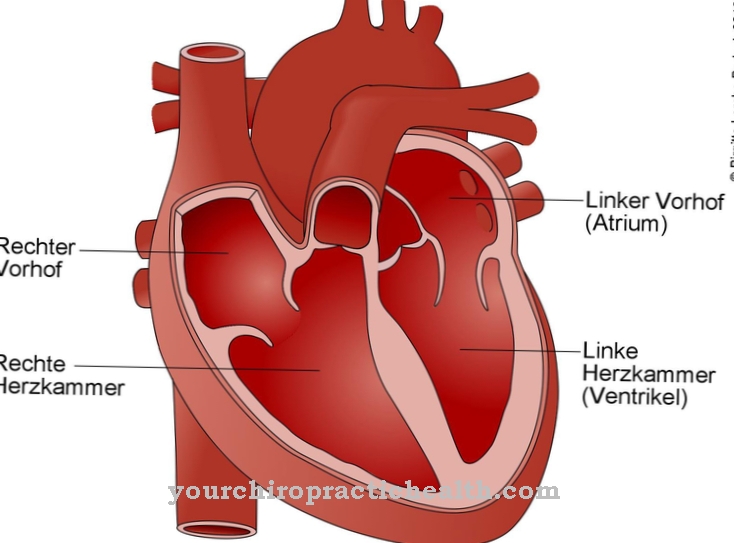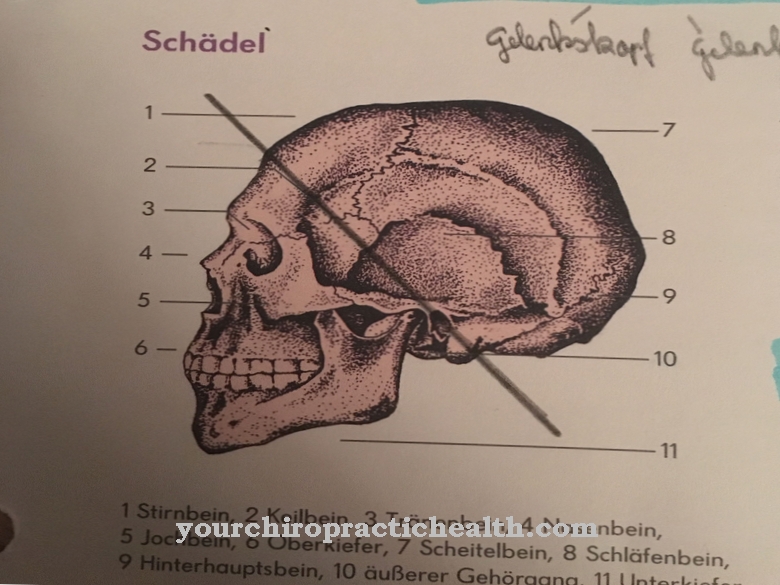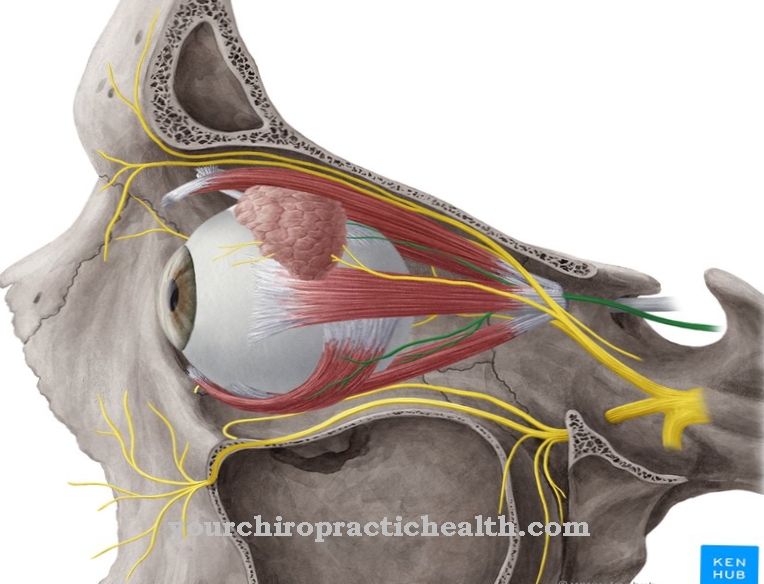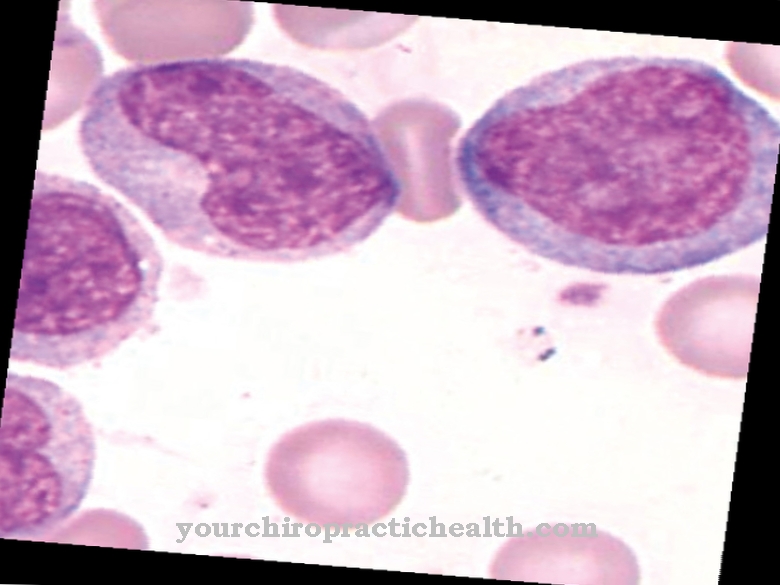Cartilage tissue with its special properties ensures that the joints function properly. If the cushioning and elasticity of the Articular cartilage decrease, the importance of the articular cartilage becomes noticeable.
What is articular cartilage?

The cartilage tissue is an essential part of the joint, which covers the joint surfaces as joint cartilage (Latin: Cartilago articularis). It has compressive and flexurally stable properties and is characterized by high tear resistance.
For this reason, the term elastic cartilage is used as a synonym for articular cartilage. Together with the adjacent structures, which include the synovial membrane, the synovial fluid (synovial fluid) and the joint capsule, it ensures that the joints function properly.
Because of its milky and translucent structure, it is called hyaline cartilage (hyalos: glass). This form of cartilage is most common in the body, for example in the hip, knee or ankle.
Anatomy & structure
The articular cartilage is not connected to the blood vessel system. Nutrition takes place via the joint fluid (synovial fluid). This covers the surface of the joint cartilage and also reduces friction during joint movement.
The main substance of the cartilage tissue is the gelatinous cartilage substance: the extracellular matrix. It is made up of so-called glycosaminoglycans (GAG), which ensure high elasticity. Glycosaminoglycans are polysaccharides, sugar chains that are made up of many disaccharides (double sugars). They are able to absorb a lot of water and thus cause the matrix to swell.
At the same time, nutrients for the cartilage cells, the chondrocytes, embedded in the cartilage tissue are absorbed with the water. Another component of the matrix is collagen. This is a long protein molecule that gives the cartilage its shape and stability. The cartilage cells take up five to ten percent of the volume in the cartilage and are responsible for the formation of new collagens and glycosaminoglycans and their breakdown. The proportion of water in the cartilage substance is around 70 percent.
Function & tasks
The articular cartilage plays a key role in the function of the joints. The thickness of the cartilage layer differs depending on the size of the joints and the stress they are subjected to. Finger joints have a 0.5 millimeter thick layer of cartilage; the knee joint is five millimeters thick.
The articular cartilage acts as a cushioning system for the bones below. The damping properties can be controlled via the amount of water absorbed by the cartilage substance. In this way, the cartilage adapts to different loads. This ability is supported by the elastic fabric. Forces that are five to seven times your own body weight can be transmitted by the articular cartilage.
With increasing age, the ability to store water and the content of elastic tissue components decrease, and the elasticity and compressive elasticity of the cartilage decrease. The joint ends close smoothly through the joint cartilage. In conjunction with the synovial fluid, it ensures that the joint surfaces slide against each other with little friction during movement.
You can find your medication here
➔ Medicines for joint painIllnesses & ailments
Pathological changes in the joint cartilage are called chondropathies. The causes of these diseases are accidents (traumatic causes), wear and tear (degenerative) and inflammation. Because of the lack of nerves and blood vessels, they are initially painless.
Any joint can be affected by damage or disease, but cartilage damage is most commonly found in the knee, shoulder and hip joints. The acute causes of cartilage damage include accidents in which short-term forces act on the articular cartilage that exceed the load limit. This can result in irreversible cartilage damage.
It often affects young people. Also in younger patients, predominantly male, osteochondrosis dissecans (also: osteochondral lesion) is diagnosed as the cause of cartilage damage. In this disease, the bones near the joints die, damage the overlying cartilage and can cause osteoarthritis. The knee is affected in 75 percent of cases. Osteoarthritis is a wear and tear disease of the joints that is caused by overload and slow wear.
If the cartilage is not adequately supplied with nutrients, osteoarthritis can also develop. The progressive change in the structure of the cartilage leads to joint deformities. In the sense of overstressing, knock knees or bow legs can put too much stress on the articular cartilage due to an uneven load distribution. In chondrocalcinosis (pseudogout), calcium crystals are found in the joint cartilage, primarily in the knee, hand and hip, which can lead to painful inflammation in the joint.
Home remedies ↵ for joint
pain
In rare cases, cartilage is damaged by infection during surgery. Polychondritis (Greek; poly: much; chondros: cartilage; -itis: for inflammatory) are rare inflammatory diseases that can occur in a relapsing or permanent manner. With chondromalacia there is a softening of the articular cartilage, which is accompanied by inflammation. It is an autoimmune disease in which the body's own defenses are falsely directed against its own tissue.

